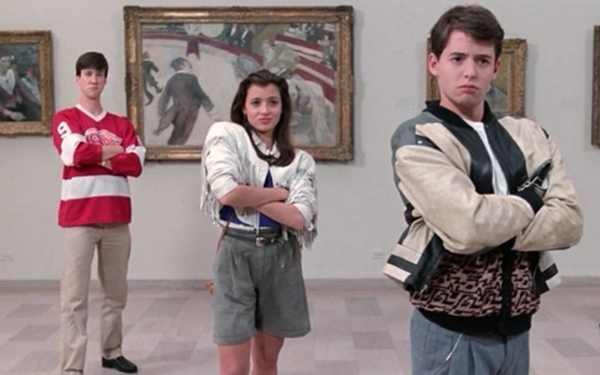Galleries
Do We Need a Guide to Talking About Art?


Sarah Cascone

It’s not easy to become one of the art world’s cognoscenti, god knows, but using the right vocabulary can go a long way toward making even a neophyte acceptably conversant. To that end, GQ turned to art historian Ben Street, a lecturer at London’s Tate, National Gallery, and the Royal Academy at Whitechapel Gallery, to create a guide to make anyone seem like an art expert. While a tad cynical, the result is also sort of, well, accurate.
“Do: Talk about placement” Street advises. “When you’re in front of a Dan Flavin don’t say: ‘This is a pile of lights.'” He offers this well-pitched if crazy alternative: “Say the obvious: ‘Look at the way that the lights are placed in the center of the wall, touching the floor. That placement is intriguing.’ That is after all where the art is happening.”
The tips allow you to bluff your way through a conversation about art without saying much of anything at all. Don’t understand a work? “Do: ask questions.” “Every single thing” that you say about a work can be a question.
Street also includes a few key no-nos: for instance, don’t ever compare abstract paintings to anything concrete—”what abstract painters really, really don’t want you to do,” Street advises, “is to see their work and say, ‘This kind of reminds me of a fridge, and that looks like a map of Manhattan.'” He also advises against having strong opinions: “Always project ‘I’m cool with this;’ be prepared to see things that are quite odd and to not be freaked out by them. Never overreact.”
Of course, if you follow the guide to the letter, you’re probably going to fall prey to some of artnet New’s 30 Art-Writing Clichés to Ditch in the New Year, as compiled by Ben Davis. Toss out too many stock phrases like “dynamic” (“a really good word, because again it doesn’t mean much . . . it’s really vague”), and you run the risk of sounding like the bullshitter you are.
If all else fails, Street suggests some hipster-style one-up-manship. If you are completely unfamiliar with the blockbuster show your dining compatriots can’t stop raving about, you can always just make up a venue that’s just too obscure and authentic for them: “Well that’s fine for you, but I’m much more interested in the grassroots scene, I went to a small space (not gallery) that’s doing some really interesting work.”
This is all well and good if you’re good with the “fake it ’til you make it” approach. If you’re more serious about really getting involved with contemporary art, however, artnet News suggests you ditch the satirical guide and check out our 8 Tips For Buying Art at an Art Fair (Hint: Try These Out at the Armory and ADAA).